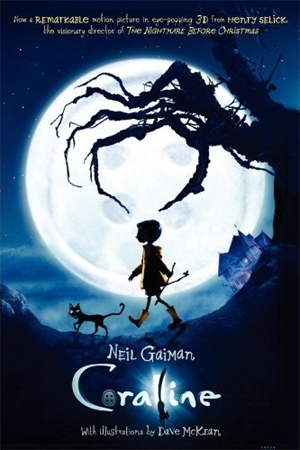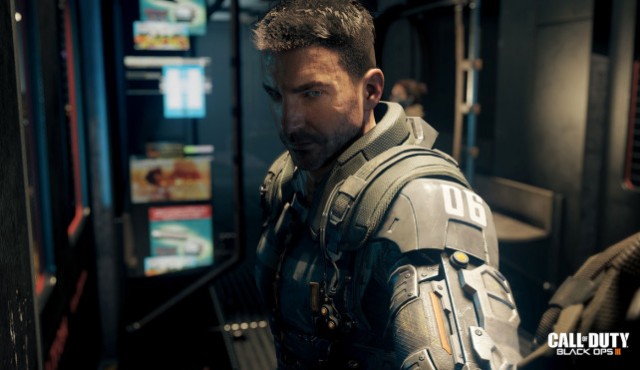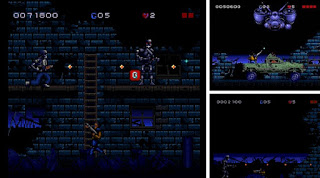


While it would be inaccurate to credit 2012 as the year in which games became self-aware, like some monstrous sentient AI, it was a year where a host of games, both big and small, finally stepped back to question video gaming’s penchant for violence. There were several approaches to this – Spec Ops: The Line delivered a thoughtful, excellently written story, while Hotline Miami subjected us to grotesque, compulsive sadism to make the point. Arguably the most controversial was Far Cry 3, the game’s misguided attempts to satirise video game tropes, particularly violence, coming off at best as wide of the mark, and at worst archaically racist.
What all of these games have in common is that the satire or commentary is rendered impotent by the fact that the games play by the same rules as their targets. Spec Ops invites you to slaughter thousands via generic cover shooter gameplay. Far Cry 3, according to its writer Jeffrey Yohalem, purposely revels in an exaggerated cliché (rich white man saves dark-skinned tribally-dressed natives) to highlight its absurdity. This is a good time to clumsily insert a Zizek quote: “We make fun of our beliefs but continue to practice them as the underlying structure for what we do.” To date, the finest arch or satirical games have nevertheless restricted themselves to the expectations of the medium. If exaggerating the status quo is the best satire gaming can currently muster, it seems that the strongest commentary on modern video games and their culture of violence has been overlooked: let’s talk about Assassin's Creed.
 The hardest task faced by an open-world game is its players’ immersion, to persuade them that a digital creation is real. This might be a straight attempt at verisimilitude or the construction of convincing fantasy, science-fiction, etc. Games create simulacra, their own rendition of reality. The trick to achieving this is to hide the limitations of the medium; to dupe the player into believing that they have absolute freedom within this world, when the truth is that they are severely restricted.
The hardest task faced by an open-world game is its players’ immersion, to persuade them that a digital creation is real. This might be a straight attempt at verisimilitude or the construction of convincing fantasy, science-fiction, etc. Games create simulacra, their own rendition of reality. The trick to achieving this is to hide the limitations of the medium; to dupe the player into believing that they have absolute freedom within this world, when the truth is that they are severely restricted.
Assassin's Creed adopts a different approach. Rather than attempt to cover up such restrictions, it uses them as its core concept. It’s impossible to ever become fully immersed in whichever world the game recreates, be it renaissance Italy or colonial America. These worlds are only accessible through the Animus, a device that reconstructs memories into a representation of the real world during various different time periods. When series anchor Desmond takes these journeys, we literally follow him into a loading screen, and then watch as the game world is constructed piece-by-piece – wireframes spring up around him, textures colour them like paint-by-numbers, and NPCs are booted up to populate it all. Once complete, these worlds, on the surface, appear just as credible as the very best open-world games. Assassin's Creed 3’s colonial America is one of the finer technical achievements seen this console generation. The streets bustle with civilians who move with purpose, marching drums and horses hooves thunder around wooden storefronts, pigs amble up to be petted.
Yet for all these efforts, the game goes to great pains to constantly remind you that it is all a reconstruction, a reality unto itself. Where most games try to present the truth, be it of our world or a fictional one, Assassin's Creed deliberately bombards you with reminders that its world is false, a reconstruction of reality. The onscreen HUD is dressed in lashings of incompatible sci-fi. Incongruous wireframes spring up to highlight objectives; targets are ringed with quivering sound waves, the screen flickers in combat if you take a powerful blow. Such reminders come on a large scale after pivotal moments and key assassinations, the entire environment breaking down around you until nothing remains but the infinite void of the loading Animus.

Assassin's Creed employs the idea of simulacrum as defined by Jean Baudrillard – a world that is not a copy of the real, but a truth in its own right. It is the hyperreal. The worlds within Assassin's Creed are the truth of video game worlds. However much they might appear so, they are not open, fully interactive, or anything like reality. By proudly flaunting the seams that other games try to hide, it forces us to reconsider our relationship with all gaming realities. Further, the way in which bloodshed operates within this hyperreality offers a biting commentary on video game violence.
Assassin's Creed has always been victim to painfully rigid mission structures. Fail to perform a certain kill stealthily enough and you fail. Stray too far from a target and you fail. Once inside an arena, you’re often blocked from leaving again by electronic walls that flex and flicker when you try to defy them. While this is in no small part down to frustrating game design (and there’s plenty of that throughout the Assassin's Creed franchise), it’s also another way that the games remind you that you’re playing within a reconstructed world, and that as such your freedom is restricted. In the name of immersion, many open-world games will let you approach a mission in your preferred style, or wander away from a target if you so choose. Assassin's Creed, as a result of the Animus concept, simply can’t offer the same. Every action taken by Connor (or Altair, or Ezio) is prescribed by history. Desmond is simply retreading their memories, and is therefore powerless to have any real impact on the world. By extension you, as the player, have no freedom within the game world to engage with it on your own terms. In the past, that bad man with a big hat on that big horse was killed by Connor dropping from a tree branch. Desmond, and therefore you, is unable to alter this outcome. It’s already happened. Every significant violent action in Assassin's Creed is governed by historical precedent. The player has no choice but to kill.

This is not dissimilar to Spec Ops: The Line, which frequently gives the player the illusion of choice when it comes to violence, when the truth is that the only way to progress is to slaughter. It even asks, in the chilling climax, why you made the choice to carry on playing when you knew the bloody cost of doing so. The answer is that there was no choice, unless you switched off the console and never went back. This is the paradigm of video game violence. In Spec Ops, Far Cry 3, Hotline Miami, and countless others, there is no way to play other than to take out anyone that stands in your path. Assassin's Creed uses history to show the rigidity of this paradigm. Desmond’s ancestors, like decades of video gaming, performed in a certain violent way. The player, and gaming as a whole, has no choice but to follow suit.
The Assassin's Creed games being written with this in mind, rather than striving after convoluted, bloated exposition that allows for annual instalments, seems highly unlikely. Still, whether intentional or not, their pronounced adherence to the rigid history and structure of video games offers the strongest comment in a field of self-awareness and satire that has still not found a way to break free of that which it is commenting upon. Perhaps such self-awareness will encourage more games to dissect the medium in a meaningful way, slowly shed these symbolic mandates, and ultimately use this awareness of established tropes to break free of them for good.




 Why Im Not Concerned About Nvidia Putting Game Ready Drivers Behind An Email Registration Wall
Why Im Not Concerned About Nvidia Putting Game Ready Drivers Behind An Email Registration Wall 10 most memorable Video Games inspired by Terminator - 2015
10 most memorable Video Games inspired by Terminator - 2015 Mad Max: Project Location & Rewards in Deep Friah's Territory
Mad Max: Project Location & Rewards in Deep Friah's Territory The Worst Security & Malware Threats for Online Gamers
The Worst Security & Malware Threats for Online Gamers Fallout 4: List of all the Perks & How do they work
Fallout 4: List of all the Perks & How do they work